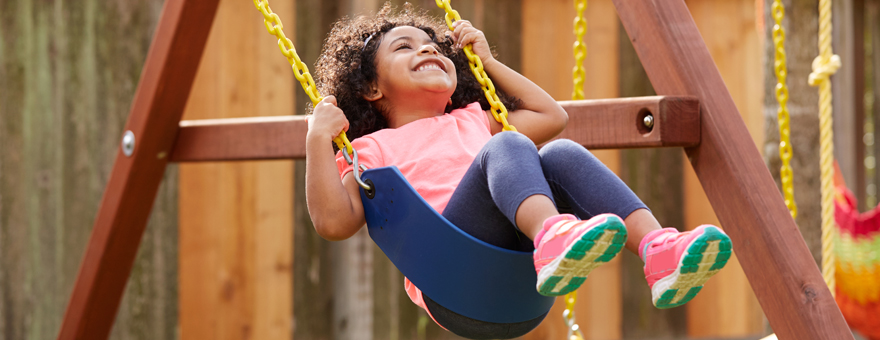
Sensory processing is the way that the body receives and interprets information through our senses.
We all have different sensory preferences and differences within normal variation.
Sensory Self-Regulation is the ability to balance the input we need so we feel just right.
Some children, and adults, find the information that they receive through their senses challenging.
Things like hearing, touch, smell, vision and taste are our commonly known senses.
There are a further three senses that also play a big part in how we and our bodies engage and respond to the world around us. They are:
- Proprioception, a sense of body awareness
- Vestibular, which involves movement, balance and coordination
- Interoception which helps us understand and feel what’s happening inside our body
What can you do to help?
Look at and define the sensory concern. Look at the triggers, when does this occur?
In what environment does this occur? Are there recent special events or changes to the routine? Are there any warning signs?
Have you established the cause of the problem, is one sense affected or are there a few? Can it be avoided? Is the method of coping socially acceptable? If so, then don’t intervene.
Use ‘A SECRET’ (Lucy Jane Miller 2006, sensory OT)
A Attention – Can I draw the child’s attention away from their anxiety?
S Sensation – Is there a sensation alarming my child right now?
E Emotion – What emotion is my child experiencing and what works best when they feel this way?
C Culture – What part of our culture can be changed to avoid this situation? Eg don’t take him shopping.
R Relationship – is there something in their relationship with me or someone else right now that’s causing them to act in this way?
E Environment – What in the environment is upsetting my child and how can we change it?
T Task – What is upsetting my child about the task in hand? Can we modify or substitute it?

Sensory opportunities in the park
Swinging front to back or side to side is calming, it offers vestibular input – helping with balance and core stability. Home alternatives are straddling a peanut ball and rocking back and forth. Do this before or after nursery and before needing to sit for focused periods such as meal or bedtimes.
Weight bearing is calming and organising (pushing and pulling). It’s good for after nursery to process, it helps with concentration and attention and builds strength. Can be done at the park, or via people play. Do this if they are feeling agitated, restless, frustrated, giddy or hyper.
Inversion (hanging upside down). This must be led by the child, but it can be calming and organising and gives an intense sensation. They can hang their head whilst on your lap, this stimulates the vestibular system, or hang over a peanut ball.
Calming strategies
- Gym ball or peanut ball as a seat, roll ball over tummy
- Theraputty (playdough)
- Throwing and catching a ball
- Stretching a theraband (tug of war)
- Weighted blanket – must be the right weight (must not exceed 10% of their weight). Supervision is required and up to date guidance followed
- Mini trampoline
- Quiet area
Fussy eating
Neophobia is a ‘normal’ developmental stage and is only an issue if it impacts on overall intake or is ongoing for an extended period of time.
Rules:
- It’s OK to make a mess
- Try to eat as a family
- Concentrate on those at the table who are eating what you want them to
- Be careful of what fluid is given in the hour or so before they sit at the table
- Be positive about what they are eating
- No foods as a reward
- Have fun!
If your child is really struggling
- Keep ‘safe’ foods safe – Food is to play with not to eat so do these activities away from mealtimes
- Dry foods – Build towers with dry food
- Pour cereals from one container to another
- Make sound shakers
- Make necklaces out of dried pasta
- Use cookie cutters with pieces of bread to make shapes, pictures etc
- Wet foods – Start with cheese, jelly, then yogurt, custard
- Build towers
- Make funny faces with food
- Have a tea party with toys
- Pour juice from a tea pot, jug or cups
Oral sensation seeking
Biting – Children can bite other children, adults or themselves for many reasons – what can help is deep pressure that stimulates the mouth which can help organise/regulate
PICA – Eating non-food items – See GP as there may be an underlying medical reason
Licking items – non-food and food – Provide alternatives
Gagging/vomiting/choking – There is a difference between gagging and vomiting – seek help with vomiting and choking
What can help?
Chew buddies and baby toothbrushes that they can play with safely (do not let them move around with them) can help to reduce sensitivity in the mouth and certain food textures.
Other helpful strategies for common aversions
Bath time – bucket or bowl of water, flannel wash, activities in the bucket. Use firm pressure – may be sensitive to noise eg extractor fans
Clothing – Seamless socks, cut out labels – dress in front of mirror
Messy play (tactile)
Noise – Headphones, quiet space, tell them hoover being used etc
Time limit (timers/duration of song, visuals)
Hankie with preferred smell
Smearing – why are they doing it? Replace with safe alternative
Before any difficult activities offer proprioceptor activities (movement) beforehand to give extra feedback to muscles and joints to wake up – rucksack on back, tug of war (they help organise the sensory system so can be more alerting or calming)
Teeth brushing – Get them used to touching their face
Blowing games
Use a cloth or finger initially
Try to break down the aversion to the toothbrush by having the child brush with chocolate spread, cheese spread or other preferred foods as a game, try flavourless toothpaste
Links to other resources
Children’s Occupational Therapy: East Cheshire NHS Trust website
Sensory processing difficulties – Sheffield Children’s NHS Foundation Trust website
Sensory Processing – Humber Sensory Processing Hub website